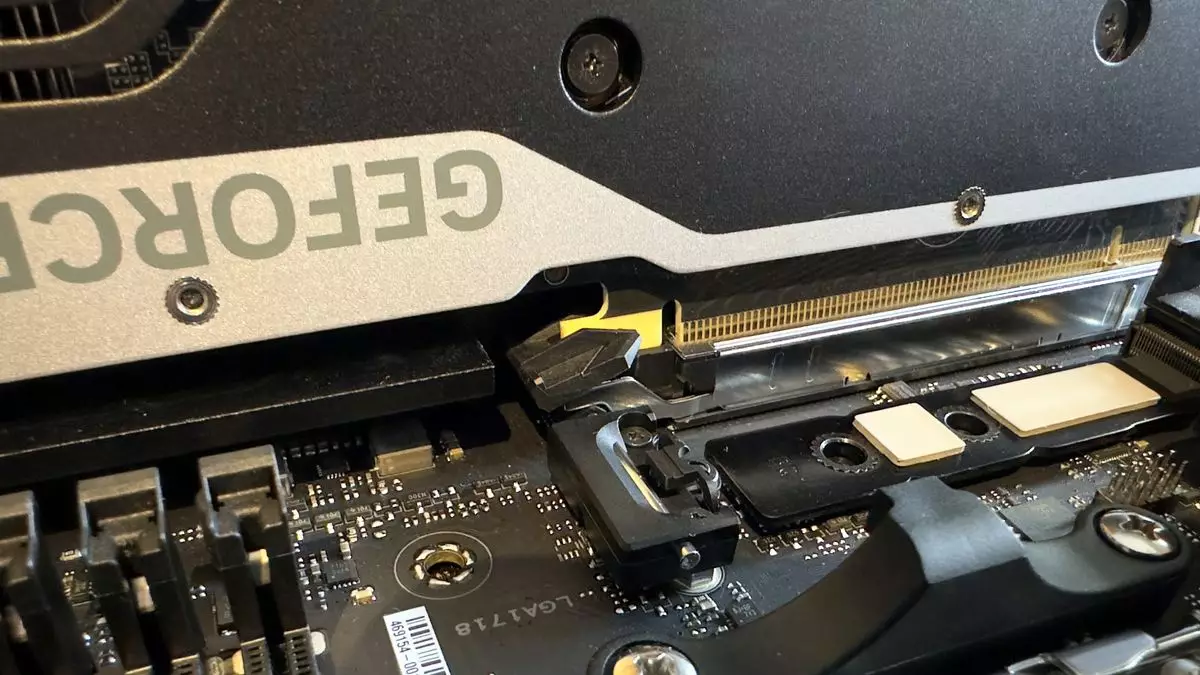The world of computer hardware is fiercely competitive, with leading companies continually striving to win over their audiences. This year, however, began with a jolt as Asus found itself embroiled in controversy regarding its Q-Release PCIe slot, which users claimed was damaging GPU contact pins. In the cutthroat realm of tech, such missteps provide rival companies an invaluable opportunity to stand out. Enter Gigabyte, whose recent marketing maneuvers offer not just a clever response, but also a lesson in strategic branding.
The Core of the Controversy
The uproar surrounding Asus’s PCIe slot issue wasn’t merely a minor hiccup; it raised valid concerns among users about the reliability of a component that is essential to optimal gaming performance. Asus swiftly established a policy to cover any damage, a move indicative of its understanding of the potential fallout from this predicament. Nevertheless, Gigabyte wasted no time in leveraging the situation to its advantage. By showcasing its own PCIe release mechanism, which purportedly avoids the issues plaguing Asus, Gigabyte positioned itself as the prudent choice for discerning gamers. This tactical marketing maneuver was not just opportunistic; it embodied a larger narrative about reliability in a product-driven industry.
The Power of Visual Marketing
The power of video content in tech marketing cannot be underestimated. Gigabyte’s Aorus brand released a video demonstrating its PCIe slot’s durability through a rigorous test of 100 GPU installations and removals. While the initial intention may have appeared to be simply educational, the subtext has undeniable undertones of brand rivalry. Following the fallout from Asus, this demonstration becomes more than a product feature; it transforms into a vocal endorsement of reliability over potential fragility.
In a market where specifications may blur together, such visual storytelling stands tall, offering consumers not just information, but an experience. The underlying message is clear: “Choose Gigabyte for longevity and security in component upgrades.” It symbolizes not merely a distinct product attribute, but a stark contrast to Asus’ recent struggles.
Perceptions of Quality: The Psychology of Choice
The friction regarding the performance of hardware often lies less in the actual capabilities of the products and more in consumer perceptions. Even though Asus stated that the wear and tear from its PCIe slot wouldn’t negatively affect functionality, the very idea that such issues exist could thwart potential buyers. Gamers invest significantly in their rigs, often spending upwards of thousands on high-end graphics cards like the RTX 5090. The fear of even a trivial scratch impacting resale value can lead to hesitation in purchasing decisions.
In this regard, Gigabyte’s clear embrace of strong marketing serves an emotional purpose. It reinforces the notion that their product is trustworthy and safe, allowing consumers to invest in their setups without the nagging fear of deterioration. When choices are so closely tied to emotional responses, it’s clear that branding becomes integral to the decision-making process.
Innovation in Design: Learning from Rivals
The controversy highlights how crucial innovation is in an environment where companies are frequently scrutinized. Asus’s Q-Release Slim, while perhaps a novel approach, fell short due to practical repercussions. On the other hand, Gigabyte’s traditional button latch design may appear simplistic, yet it showcases how sometimes, sticking to the fundamentals can yield better results. That evidence of wear after almost 100 GPU swaps underpins a compelling argument for ensuring a balance between innovative design and functional reliability.
Companies must remain ever-vigilant, recognizing that today’s technology landscape is not solely focused on features but encompasses user experience and durability in design. As manufacturers like Asus pivot to mitigate damage control, they must ultimately reevaluate their approaches to innovation in response to criticisms to remain competitive.
The Competitive Advantage
Ultimately, Gigabyte’s shrewd marketing exploits Asus’ missteps without needing to resort to disparagement of its rival. Instead, this situation reveals a broader narrative critical for businesses in the tech arena: the ability to evolve, adapt, and strategically position oneself during periods of uncertainty not only bolsters market presence but fortifies consumer loyalty. In an industry driven by performance and reliability, the ability to communicate these attributes effectively aligns with customer expectations and desires. Thus, Gigabyte’s response transcends mere opportunism—it potentially heralds a new chapter in competitive strategy as tech companies navigate their growth and reputation through the trials and tribulations of their peers.

